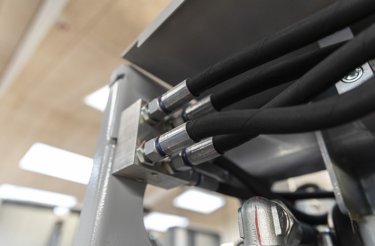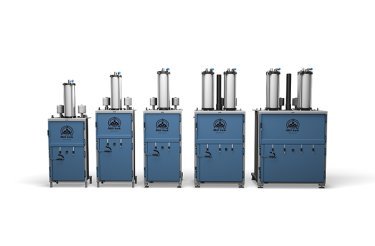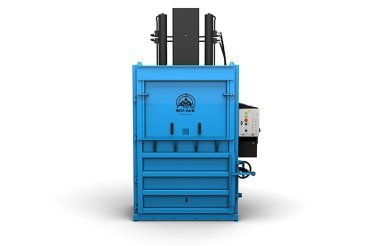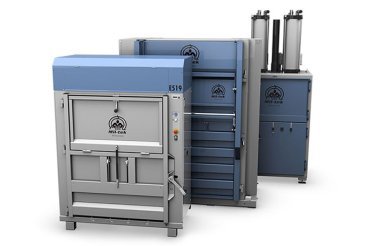
What is the difference between a hydraulic and a pneumatic baler?
Our Guide will help you to understand the differences between a hydraulic and a pneumatic baler for recycling.
Hydraulic and pneumatic balers are both for recycling
When you decide to add a recycling baler on your business premises, one of the choices you’ll have to make is between hydraulic and pneumatic balers.
Both of these types of machines do essentially the same task: compress recyclable materials such as paper, cardboard, and plastic into dense blocks (bales) that can be easily transported and recycled.
Both machines have a power source and use that power to press materials.
So what is the difference?

Pneumatic
Pneumatic Balers are powered by compressed air. Air fills the top cylinder creating pressure that pushes down the pressing plate. The pressure locks the pressing plate down without further use of power.
Pneumatic balers run solely on compressed air; there are no electrical components.

Hydraulic
Hydraulic Balers use an electric motor to pump hydraulic oil. The hydraulic oil generates pressure in the rams that drives down the pressing plate.
Hydraulic balers are powered by a motor which runs on electricity.

“Pneumatic Balers use compressed air to depress the pressing plate. Hydraulic Balers pump hydraulic oil to the pressing rams to generate pressure to the pressing plate”
Additional considerations for pneumatic vs hydraulic balers
Both of these baler types can help your business manage waste efficiently. Each has benefits that are better suited to one particular business or another. It typically depends on a company’s specific requirements.

Here are a few other factors to keep in mind when comparing hydraulic and pneumatic balers
- Volume – Hydraulic balers are better suited for high volume (approx more than one ton per week)
- Size – Pneumatic balers are typically smaller and better suited to work spaces with limited space
- Noise – Hydraulic balers are often quite noisy and are therefore often installed away from the production process
- Noise – Pneumatic balers are quieter and are therefore often installed close to the production process
- Maintenance – Both pneumatic and hydraulic balers require annual maintenance, although pneumatic balers require less as they have no electrical components
- Power Source – Pneumatic balers can plug straight into existing air lines. Otherwise, a small compressor is required
- Power – Once the pressing plate of a pneumatic baler is down, it locks in place using the compressed air. Hydraulic balers require constant power to maintain constant pressure
- Strength – The high pressure of the hydraulic oil creates more downward pressure on the material than compressed air, though uses more power doing so
- Hygiene – Pneumatic balers are better suited to food production facilities as they minimize the risk of contamination
Have a question?
Get in touch today to learn more about how Mil-tek can help your business save time, space and money by better handling waste
Get info about a product or have a chat with one of our local reps. Let us know what you need so the right person can get in touch